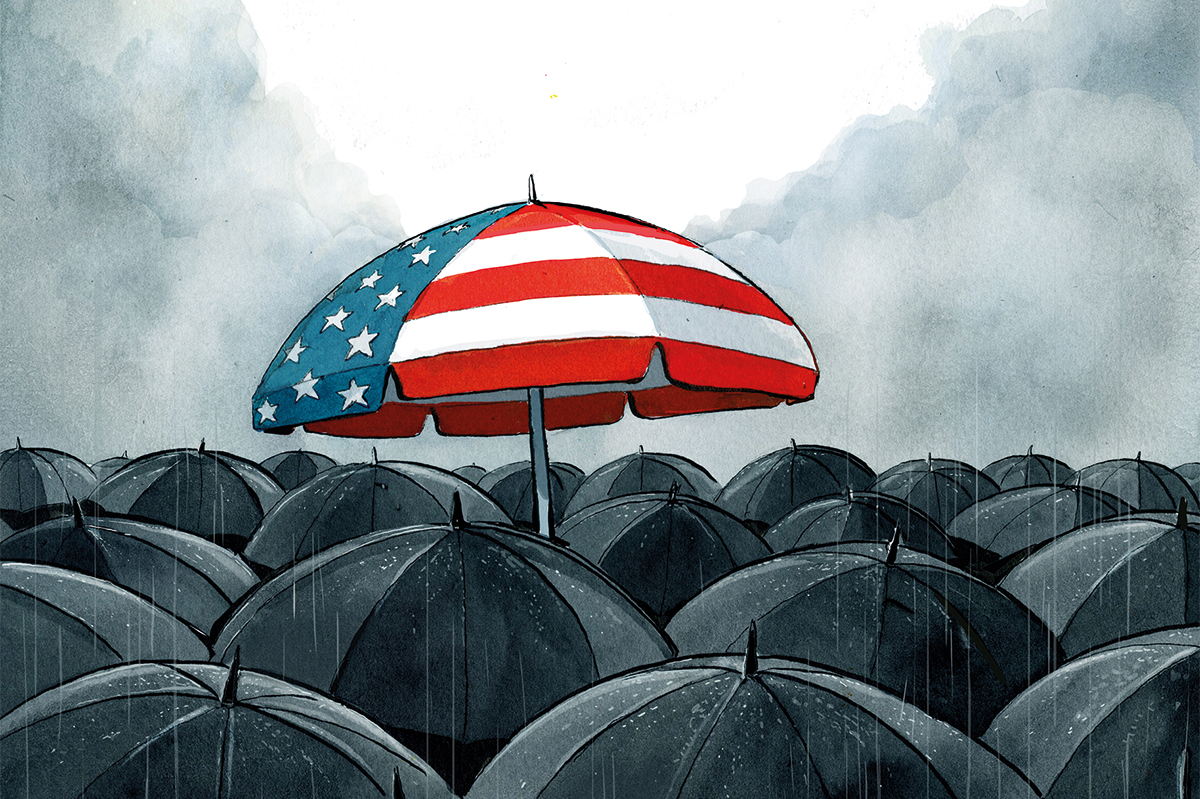At the very moment most people seem to have forgotten of his existence, President Biden has slowly but purposefully shuffled across Vladimir Putin’s latest red line in Ukraine. After months of President Zelensky’s tireless pleas, the United States has finally given Kyiv a green light to use American missiles (ATACMS) for strikes deep inside Russia.
Putin may well decide that it is safer to swallow his pride and pretend nothing has happened
Reports indicate that Biden’s permission applies in the first instance only to the Russian and North Korean troops deployed in the Kursk region. It aims at helping Kyiv to hold on to the piece of the Russian territory that the Ukrainians have occupied since August 2024, while signaling to the North Koreans that their involvement in Russia’s war comes at a cost.
In other words, Biden has not so much crossed Putin’s red line as probed it with one foot. This is very much in character for a president who has thus far shown exceptional caution in handling Putin. Such caution may well be warranted given the high stakes involved. Biden’s detractors have argued, however, that the president has given in to Putin’s threats, and that earlier, more decisive, action could have made a difference on the battlefield.
At this point, however, few believe that ATACMSs strikes in the Kursk region will change the outcome of this war. If, however, Ukraine were eventually allowed to use these missiles more broadly, then perhaps it could at least deter Russia’s strikes on its energy infrastructure by threatening retaliation against similar targets deep inside Russia. As Ukrainians brace for the cold, dark winter months ahead, deterring Russian strikes will be much more meaningful to them than the uncertain prospect of holding on to Kursk.
There are already reports that the British and the French have followed suit by authorizing Ukraine’s use of Storm Shadows for striking targets inside Russia. These missiles have already been used extensively to target Russian bases and troop concentrations in Crimea and Donbas.
Commenting on the media reports, Zelensky said simply that “missiles will speak for themselves.” His main concern now is not so much whether he can use these missiles in Kursk, but whether he will have enough missiles to use them anywhere at all.
Biden’s decision adds an important element to the ongoing discussion of the endgame in Ukraine. President-elect Trump has vowed to end the war “within twenty-four hours.” Zelensky, in a probable effort to ingratiate himself with the infamously unpredictable Trump, has claimed that, with him in the White House, the war will “end sooner.”
The underlining idea here is that the incoming president will somehow entice or force Putin to enter negotiations. The ATACMS authorization was supposed to be one of the cards that Trump would play. His nominee for the position of national security advisor, Michael Waltz, argued recently in a co-authored article that “if he [Putin] refuses to talk, Washington can… provide more weapons to Ukraine with fewer restrictions on their use. Faced with this pressure, Mr. Putin will probably take the opportunity to wind the conflict down.”
Well, now that card is being played by Biden. If it fails to bring Putin to his knees (and it is almost certain that it will fail — the White House is admitting that much), then one has to ask what other cards Trump might have in his hand.
To be sure, the United States has plenty of cards to play, but it must commit to staying in the game indefinitely. The idea that the war can be ended on reasonable terms within just a few days or even months reflects a certain wishful thinking, a desire to “be done” with Ukraine. The problem is that Putin does not play for the short term. He is committed to this war, and will not take the opportunity to end the war through compromise, even as ATACMSs come raining down.
Putin, too, will have to react to Biden’s decision. He has repeatedly and publicly promised a response to strike inside Russia, which, he recently argued, would “fundamentally change” the character of the conflict, making it a war between Russia and the West. He claimed that he had already directed his ministry of defense to offer recommendations as to Moscow’s response.
Yet the Russian president knows very well that, for all his propagandistic claims, Russia is in fact not at war with the West, and bringing this war onto his head by targeting western bases or infrastructure — as the US intelligence suggested he might — would be extremely risky for a country that has so woefully underperformed on the battlefields of Ukraine. Putin may well decide that it is safer to swallow his pride and pretend nothing has happened. After all, it would not be the first time that his bluff has been called.
On November 19, Russia’s invasion of Ukraine reaches its 1,000-day mark. Who would have predicted 1,000 days ago that Ukraine would be striking Russia with American-made ATACMSs? Putin most certainly had not foreseen this possibility. But here we are.
The ailing American president has left Ukraine with a parting gift that will add a little more complexity to the tangled mess of a conflict that, as yet, appears very far from being resolved.
This article was originally published on The Spectator’s UK website.

























